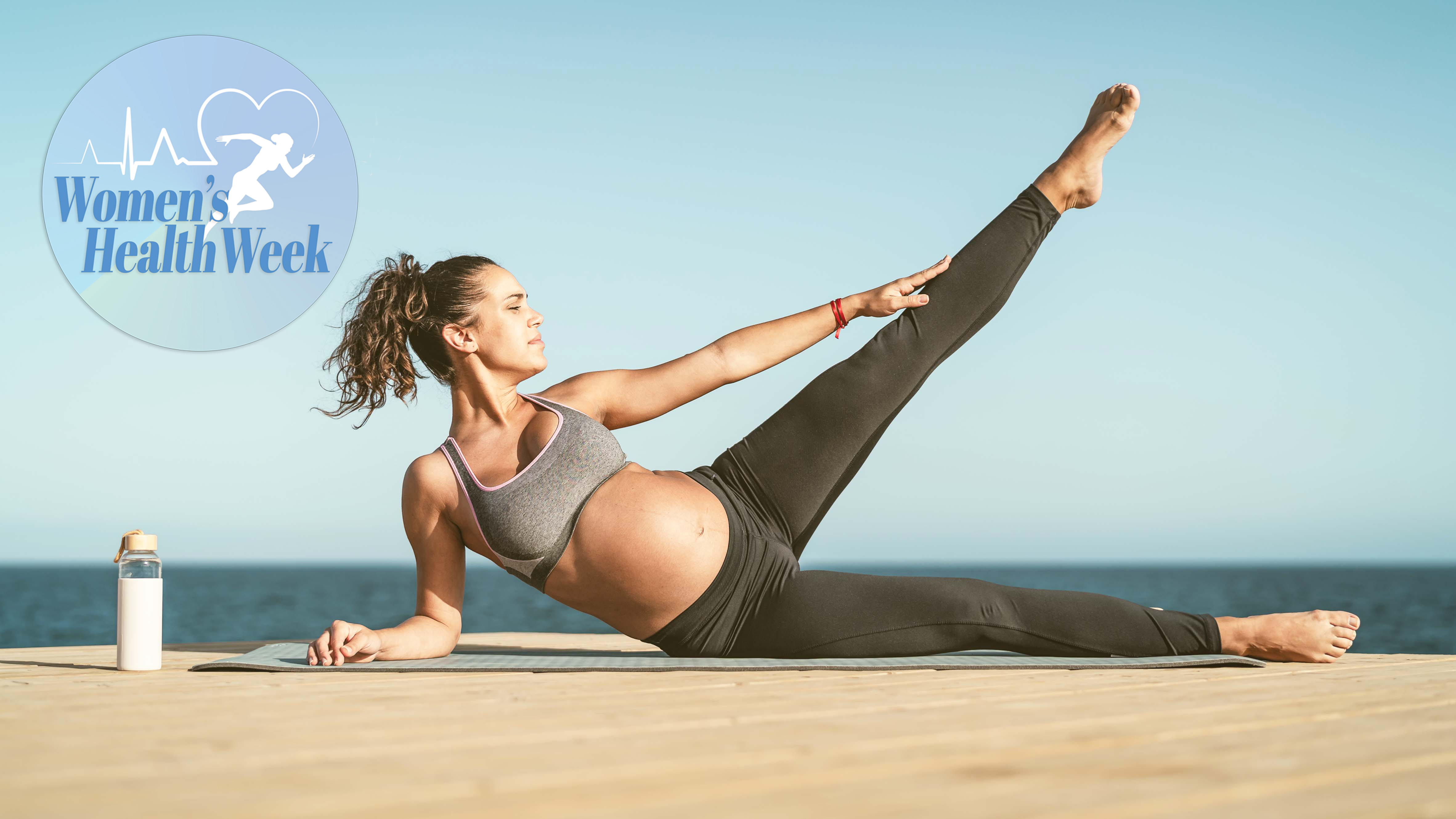Skip sit-ups and crunches — this 10-minute deep core workout is pregnancy and postpartum safe
A strong core can help during pregnancy, birth and postpartum

Despite writing about fitness for a living, when I found out I was pregnant with my son, I was overwhelmed with everything I couldn’t do when it came to working out.
I knew crunches, sit-ups and bicycle kicks were out of the question, as they could increase my risk of diastasis recti, or the separating of the abdominal muscles that can happen during pregnancy. However, I knew it was important to work on my deep core muscles, as a strong core is important during labor and delivery.
This article is part of Tom's Guide's Women's Health Week — a series of content that explores how technology and the right workouts can support and empower women through every phase of life.
One workout that I did time and time again was this 10-minute deep core sequence by trainer Ashley Neidhart Gregory — read on to find out more.
As a reminder, if you are pregnant, it’s important to speak with your doctor or midwife before exercising. What worked for me might not be right for you and your body, so always get a professional opinion before jumping into a new workout.
What is the workout?
The workout, designed by Neidhart Gregory, consists of five different exercises you repeat on both sides of the body for the 10-minute workout.
You won’t need any additional equipment, and you can do all of the exercises from home. You might want to lie on one of the best yoga mats to make things more comfortable.
Once you’re out of the first trimester, it’s recommended that you avoid lying on your back, so all of these exercises are completed on the side, making it safe for all trimesters. It’s a side plank sequence, and you’ll complete each of the exercises for a minute.
Get instant access to breaking news, the hottest reviews, great deals and helpful tips.
It’s really important to keep hydrated and your heart rate steady — if you need to pause and take a break at any point, feel free to do so.
Here’s the exercises involved:
- Side plank leg lift: To do a side plank leg lift, start by lying on your side, with your lower leg bent, and your bodyweight resting on your elbow. Brace your deep core muscles, thinking about them hugging your baby, and lift and lower the top leg slowly and with control. Keep the toe pointed, and imagine you’re moving the leg through honey.
- Side plank rainbow toe taps: Start in the same side plank position as above. Take the top leg back behind your body, keeping the leg straight and the toe pointed. Tap the toe down to the ground, then lift the leg and do a rainbow to take it in front of you, tapping it down to the ground.
- Side plank hip dip: Starting in your side plank position, simply lower your hips to the ground, then lift them back to your starting position. Keep pulsing, and ensure you’re lifting your hips back up in line with your body each time.
- Side plank trace circle: Start in your side plank position, with your top leg extended and your toes pointed. From here, draw a small circle with your leg, keeping your core engaged throughout. You should feel this exercise in your glutes.
- Side plank oblique crunch: From your side plank position, lift your top leg and extend your arm away from your body. From here, crunch your knee into your body, at the same time, bending your arm so your knee and elbow touch. With control, extend both away, back to your starting position.
Once you’ve done each exercise for one minute, swap and complete them all on the opposite side.
A post shared by Ashley Neidhart Gregory • Fitness for Busy Moms (@ashleyneidhartgregory)
A photo posted by on
What are the benefits?
As mentioned, there are several benefits to working on your deep core muscles during pregnancy. When performed correctly, strengthening your core muscles can help support your growing baby and protect your spine during pregnancy. Strong core muscles can also reduce the pressure on your pelvic floor as your baby grows and gets heavier.
I hadn’t appreciated how much of a workout labor would be, but a strong core can be helpful during delivery. I had a natural birth with no pain relief, and delivered my baby in a few pushes. It was a lot quicker than anticipated, but I was grateful for how strong my body was in the delivery room.
Working on your core strength during pregnancy can reduce the likelihood of developing diastasis recti. Diastasis recti is normal, and often temporary, as it’s the body accommodating your growing baby.
But working on your core strength can help minimize the severity of the separation and help your core heal faster postpartum. The stronger your deep core muscles are, the faster they’ll heal post-pregnancy.
I started very gentle core engagement exercises a couple of weeks after giving birth to strengthen my pelvic floor muscles and regain strength in my core.
I didn’t do anything more strenuous until I’d seen a female physio 12 weeks after giving birth. This workout is one I came back to postpartum, but always remember to be kind to your body — it’s taken nine months to grow your baby, and it’ll take time to heal and recover.
More from Tom's Guide
- Is swimming safe during pregnancy?
- Best exercises to do when you’re pregnant - according to an expert
- My Oura ring knew I was pregnant before I did — here's how

Jane McGuire is Tom's Guide's Fitness editor, which means she looks after everything fitness related - from running gear to yoga mats. An avid runner, Jane has tested and reviewed fitness products for the past five years, so knows what to look for when finding a good running watch or a pair of shorts with pockets big enough for your smartphone. When she's not pounding the pavements, you'll find Jane striding round the Surrey Hills, taking far too many photos of her puppy.
You must confirm your public display name before commenting
Please logout and then login again, you will then be prompted to enter your display name.
